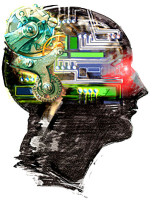Social robots come straight out of storytelling, science fiction, and fantasy. These machines are quickly becoming amazing, ranging from the simplest machines with a talking head to the most complex assistive partner that walks, talks, moves, and more. Research scientists and engineers for whom I edit their work will find this article exceptionally simple, but if you are one of my clients who works in another engineering or technology field, please read on.
Did you ever wonder about some of the basics of these fascinating artificial humans? A social robot interacts with people or autonomous machines by being programmed to artificially understand social rules and behaviors. Social robots are thinking machines that often resemble a human being in thought and appearance. Sometimes, a social robot may only consist of parts of humanoid characteristics, but the rest of its body will be clearly mechanical. Other humanoids show a fuller and even sometimes shocking resemblance to human beings.
Social robots can be seen helping people everywhere from nursing homes to therapy centers. Mealtime conversations and other companionship purposes are being tested with humanoids and showing beneficial effects for the elderly. In these cases, the socially assistive robot will often have a realistic face and head but may lack a realistic body. Oftentimes, the elderly person is stationary, so the most interactive portion of the companion thinking machine must be its face. Social robots assigned to experiments of working with children are often more realistic in comparison to the human figure for following increased movement seen in young people. Children are often very physically active, and social robots must keep up with their movements if the most effective outcomes are to be reached.
Bio-inspired and soft robotics will continue paving a way toward enhancing physical aspects of the humanoid social robot. As advances in various fields of robotics continue to gain utility through development, using social robots may not be so far off in the future as many people may think. Robots have already replaced humans in the assistance of dangerous and repetitive tasks. Increased common usage of semi-autonomous social robots may be coming soon to a service location near you.

Thanks for reading,
Jeanie
General blogging note: Blog posts are written in a personal style for our entertainment. If you are looking for a specialist, rest assured that I can help you enhance your story line’s impact and clarity for moving your content into the hearts and minds of your readers.